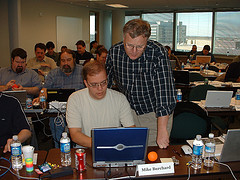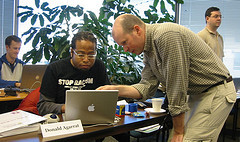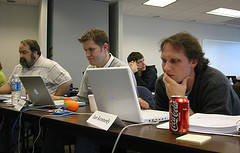The Ruby Extensions Project contains an absolutely wonderful hack. Say you want to convert an array of strings to uppercase. You could write
result = names.map {|name| name.upcase}
Fairly concise, right? Return a new array where each element is the corresponding element in the original, converted to uppercase. But if you include the Symbol extension from the Ruby Extensions Project, you could instead write
result = names.map(&:upcase)
Now that’s concise: apply the upcase method to each element of names. So, how does it work?
It relies on Ruby doing some dynamic type conversion. Let’s start at the top.
When you say names.map(&xxx), you’re telling Ruby to pass the Proc object in xxx to map as a block. Ifxxx isn’t already a Proc object, Ruby tries to coerce it into one by sending it a to_proc message.
Now :upcase isn’t a Proc object—it’s a symbol. So when Ruby sees names.map(&:upcase), the first thing it does is try to convert the Symbol :upcase into a Proc by calling to_proc. And, by an incredible coincidence, the extension project has defined a to_proc method for class Symbol. It looks like this:
def to_proc
proc { |obj, *args| obj.send(self, *args) }
end
It creates a Proc which, when called on an object, sends that object the symbol itself. So, whennames.map(&:upcase) starts to iterate over the strings in names, it’ll call the block, passing in the first name and invoking its upcase method.
It’s an incredibly elegant use of coercion and of closures.


